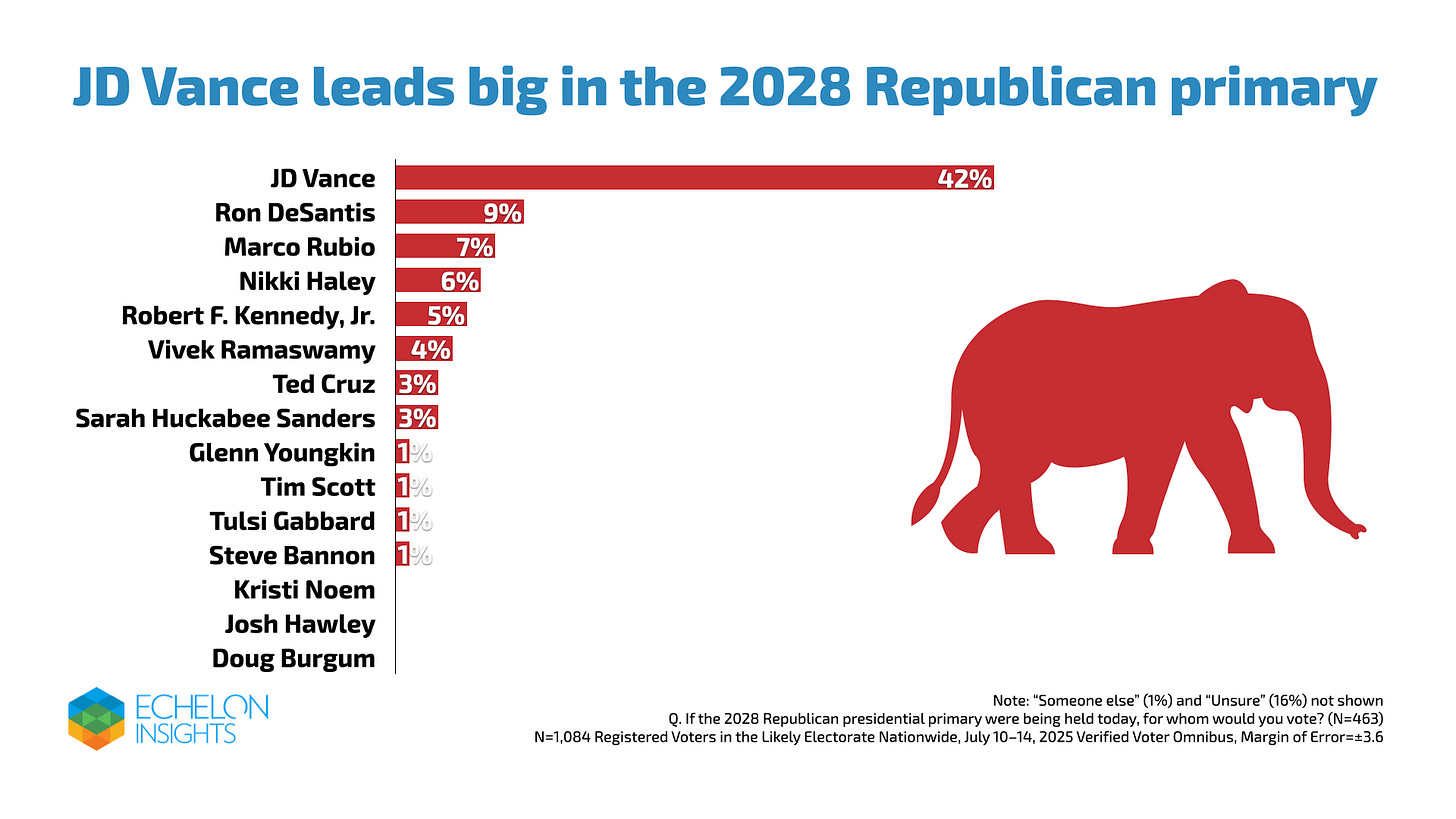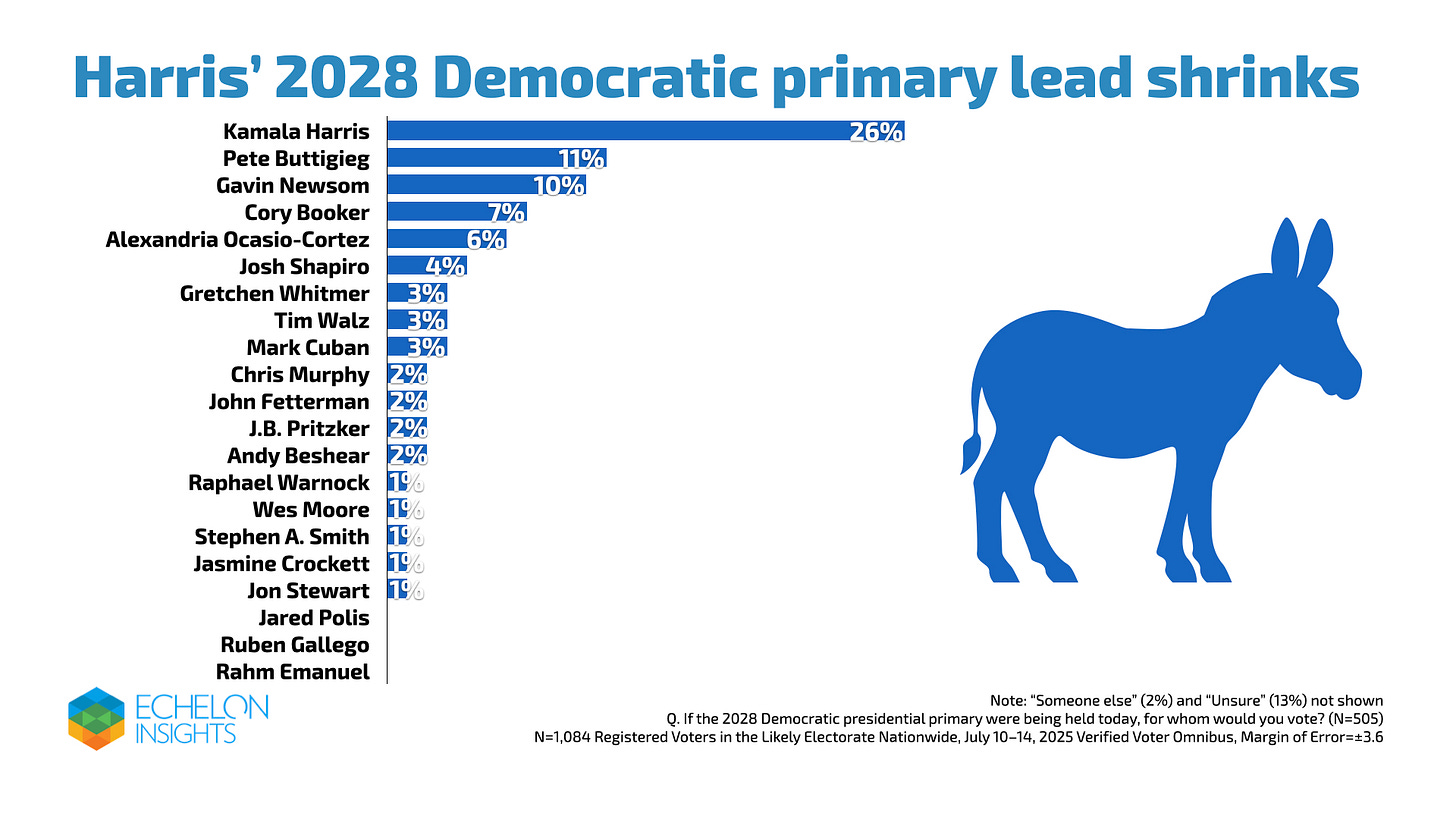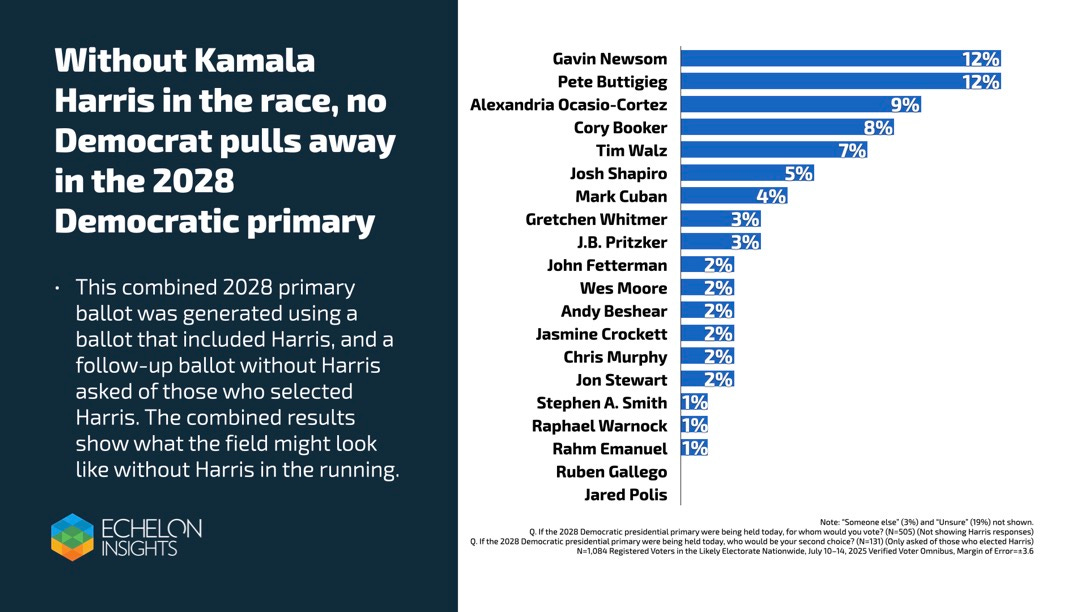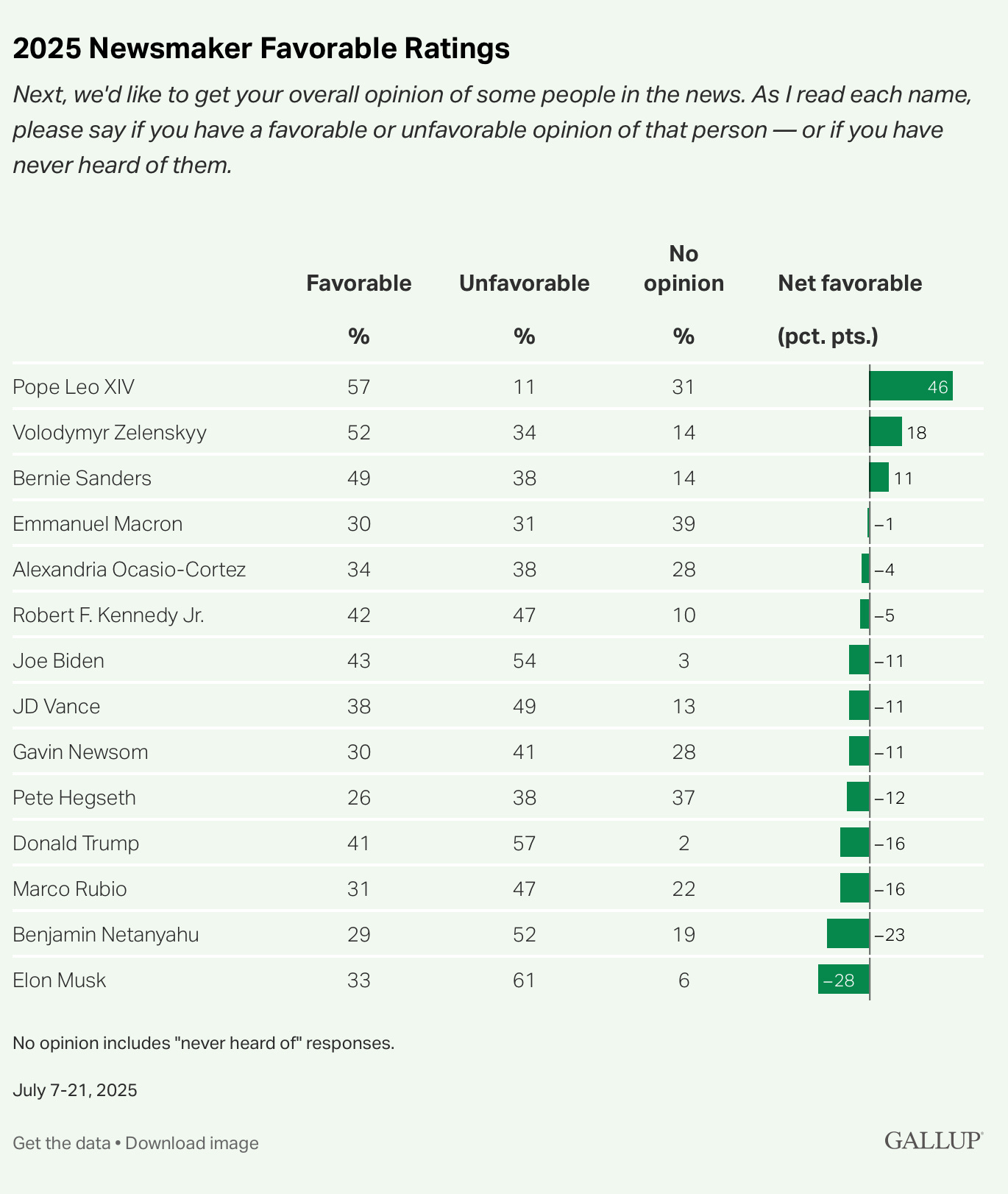Survey Says: J.D. Vance Dominates GOP Field for 2028 While Demo Field Remains Fluid—Kamala Harris Looms Large, Still. And what about that Popular Pope!
Two new national polls reveal where the 2028 race stands today—and how one candidate’s decision could change everything. And another survey shows the Pope is hot, and Elon is not!
⏱️ Read time: 4.5 minutes
Two New National Surveys Reveal Interesting Data
2028 GOP Primary Snapshot
The latest Echelon Insights Verified Voter Omnibus, conducted June 10–14, polled 1,084 likely voters with a margin of error of +/- 3.6 points. In the hypothetical 2028 Republican primary, J.D. Vance leads with 42 percent, far ahead of the field. Imagine a GOP field where one person already has plurality support—something you don’t normally see this far out. Rounding out the top tier are Ron DeSantis at 9 percent, Marco Rubio at 7 percent, and Nikki Haley at 6 percent, while other names—Robert F. Kennedy Jr., Vivek Ramaswamy, Ted Cruz, and Sarah Huckabee Sanders—trickled in between 3–5 percent. That kind of early consolidation is unusual and suggests Vance may be locking down support well ahead of the formal nomination fight.
Democratic Field with Harris in the Mix
In a parallel question, Echelon asked respondents to choose among potential Democratic nominees including Vice President Kamala Harris. From the same sample and timeline, Harris garnered 26 percent, followed by Pete Buttigieg (11 percent), Gavin Newsom (10 percent), Cory Booker (7 percent), and AOC (6 percent), with Josh Shapiro, Mark Cuban, and Gretchen Whitmer in the 3–5 percent range. Harris leads, but her support is modest, leaving plenty of room for shifts before anyone casts a ballot.
Democratic Field without Harris on the Ballot
Echelon followed up with respondents who had initially selected Harris—offering them a second-choice ballot without her. The combined projection showed Buttigieg and Newsom tied at 12 percent, AOC at 9 percent, Booker at 8 percent, Tim Walz at 7 percent, then Josh Shapiro (5 percent) and Mark Cuban (4 percent) trailing. Harris’ presence seems to hold a big chunk of the center-left vote in place. Take her off the board, and the field suddenly looks wide open.
How Harris Mirrors California’s Gubernatorial Race
We’ve seen this before. When Kamala Harris decided not to run for the open gubernatorial seat in California, it left a bunch of relatively unknown candidates to try to have their own break out moments. . I see echoes of that here: Harris’ positioning on the national stage is keeping the field somewhat locked down (it is early, and she is riding on residual name ID), but if she declines to run, it’s likely we’ll see a dozen ambitious Democrats rushing in to fill the vacuum. No one is more interesting in what Harris ends up doing than Governor Gavin Newsom. It’s like a game of chicken - which Californian has a shot?
Why Early Leads Aren’t Destiny
Sure, these early leads look impressive—but can they stick? History says maybe not. For Republicans, internal dynamics, fundraising and debate performance could reshape support before 2028. And of course a lot hinges on whether Trump embraces his Vice President, or goes in another direction. For Democrats, the absence of an established front-runner such as Harris would lave the door wide for surprise entries or rapid shifts. And given that these polls come from a single cross-section in June, they should be viewed as indicative snapshots, not predictions.
Newsmakers Public Favorability: Pope vs. Musk
A separate Gallup survey, polling roughly 1,000 adult Americans during July 7–21, measured net favorability ratings across 14 public figures. Topping the list was Pope Leo XIV, the first American pontiff, with a +46 net favorability—57 percent favorable vs. just 11 percent unfavorable. At the bottom was Elon Musk, at -28 net (33 percent favorable, 61 percent unfavorable), going from admired to questioned in a matter of weeks. The contrast illustrates how public sentiment can swing dramatically based on recent behavior or narrative framing.
Analytics, Not Advocacy
Taken together, these two polls underscore how early political landscapes and public opinions can fluctuate. Whether a candidate is consolidating support (as with Vance), keeping the field locked down (Harris), timing and perception profoundly shape outcomes—and they change fast. I often tell readers: polling is a snapshot in time, not a roadmap.
So, Does It Matter?
This matters, especially if your goal is to engage an audience not rooted in partisan identity. Focusing on the data—rather than ideology—allows readers to see patterns: who’s building momentum, who’s at risk, and what actually moves public opinion. It underscores that politics, like brand reputation or public image, hinges more on perception, turn, and timing than labels.
These numbers don’t tell you who to like. They illuminate who Americans are watching. What does that tell us about who we trust—and who still has work to win over?
If you would like to see these polls online, the Echelon one is here and the Gallup one is here.






